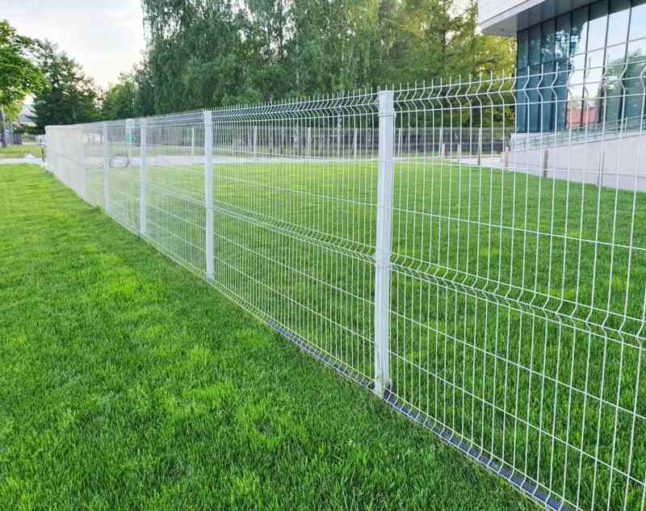Featured

When considering installing a fencing on your home, one of the most important steps is to recognize whether you need a license. The details authorizations required can differ depending on your location, the type of fencing you intend to set up, and the height or positioning of the fence.
Why You Need an Authorization for a Fence Installment. The permit procedure helps neighborhood authorities confirm that your fence does not conflict with web traffic visibility, regard your home lines, or break height constraints. Installing a fencing without an authorization can result in fines, elimination of the fence, or delays in building, so it's crucial to inspect whether a permit is needed prior to starting your task.
Sorts Of Permits You Might Require. There are a couple of typical sorts of permits you could require for a fencing installation:
Building Permit. A building permit is the most typical license needed for fencing installments. This authorization ensures that the fence satisfies security standards and is built according to neighborhood building codes. A building license is commonly needed if the fence exceeds a certain elevation (frequently 6 feet), is made of particular materials, or is situated near a public pathway or road.
Zoning Authorization. A zoning authorization might be called for to validate that your fencing abides by regional zoning legislations. Zoning regulations can dictate where a fencing can be placed on your residential property, just how high it can be, and whether it is admitted specific areas (such as along home lines or ahead yards) As an example, some communities have guidelines restricting the elevation of surround the front yard to make sure presence for chauffeurs and pedestrians.

Problem Permit. You may need a problem authorization if you are building a fence near your home line or close to a street. A problem describes the distance a framework, including fences, should be from the building line. Setback regulations differ by place, and making sure that your fence is positioned appropriately can avoid disputes with neighbors and avoid infractions.
House Owner Association (HOA) Authorization. You might require authorization from them in addition to neighborhood permits if you live in an area controlled by a Home owner's Association (HOA) HOA policies often cover the type of materials, elevation, design, and shade of fences. Even if your city government does not require a permit, your HOA might still have details standards that need to be followed.
Exactly How to Obtain a Fencing Permit. To obtain a fence license, you'll need to contact your local structure division or preparation workplace. The application process normally involves submitting a kind, paying a fee, and sending a website plan of your residential property that shows the proposed location of the fencing. You may additionally need to include information about the materials, height, and design of the fence.
In many cases, a neighborhood authorities may need to inspect your residential property before accepting the license. As soon as the authorization is approved, you will certainly be authorized to continue with your fence setup.
When Is a License Not Needed? In specific situations, an authorization might not be needed. These scenarios can include:
Reduced Height Fences: In several areas, fencings that are listed below a certain elevation (frequently 3 to 4 feet) might not need a license, specifically if they are placed in the backyard or other non-visible areas.
Fencing Replacement: If you're replacing an existing fencing with the exact same height and material, some locations may not require a brand-new authorization.
Non-Obtrusive Fences: Ornamental or short-lived fencings, such as those used for horticulture or landscaping purposes, may not need licenses as long as they are not long-term and reduced.
Nonetheless, it is essential to consult your local zoning office or structure department, as regulations can vary by jurisdiction.
Effects of Not Getting an Authorization. Failing to get the required authorizations can bring about substantial consequences. These include penalties, forced elimination of the fence, or even hold-ups in building and construction. In addition, if your fence doesn't meet regional regulations, you can face legal issues with neighbors or local authorities.

Final thought. By ensuring that you comply with neighborhood regulations and acquire the needed licenses, you can guarantee and prevent expensive blunders that your fence is legitimately compliant. Examine with your regional structure division, HOA, and zoning office to identify what permits are needed for your particular fence job.
Latest Posts
Unlock WyHy FCU – Top Benefits for Your Money Goals
Published May 27, 25
1 min read
Don’t Miss Limited-Time Auto Repair Offers in Chicago at Montclare Auto Repair
Published May 25, 25
1 min read
Find Out Cut Costs on Car Maintenance with Montclare Auto Repair’s Special Deals
Published May 24, 25
1 min read
More
Latest Posts
Unlock WyHy FCU – Top Benefits for Your Money Goals
Published May 27, 25
1 min read
Don’t Miss Limited-Time Auto Repair Offers in Chicago at Montclare Auto Repair
Published May 25, 25
1 min read
Find Out Cut Costs on Car Maintenance with Montclare Auto Repair’s Special Deals
Published May 24, 25
1 min read